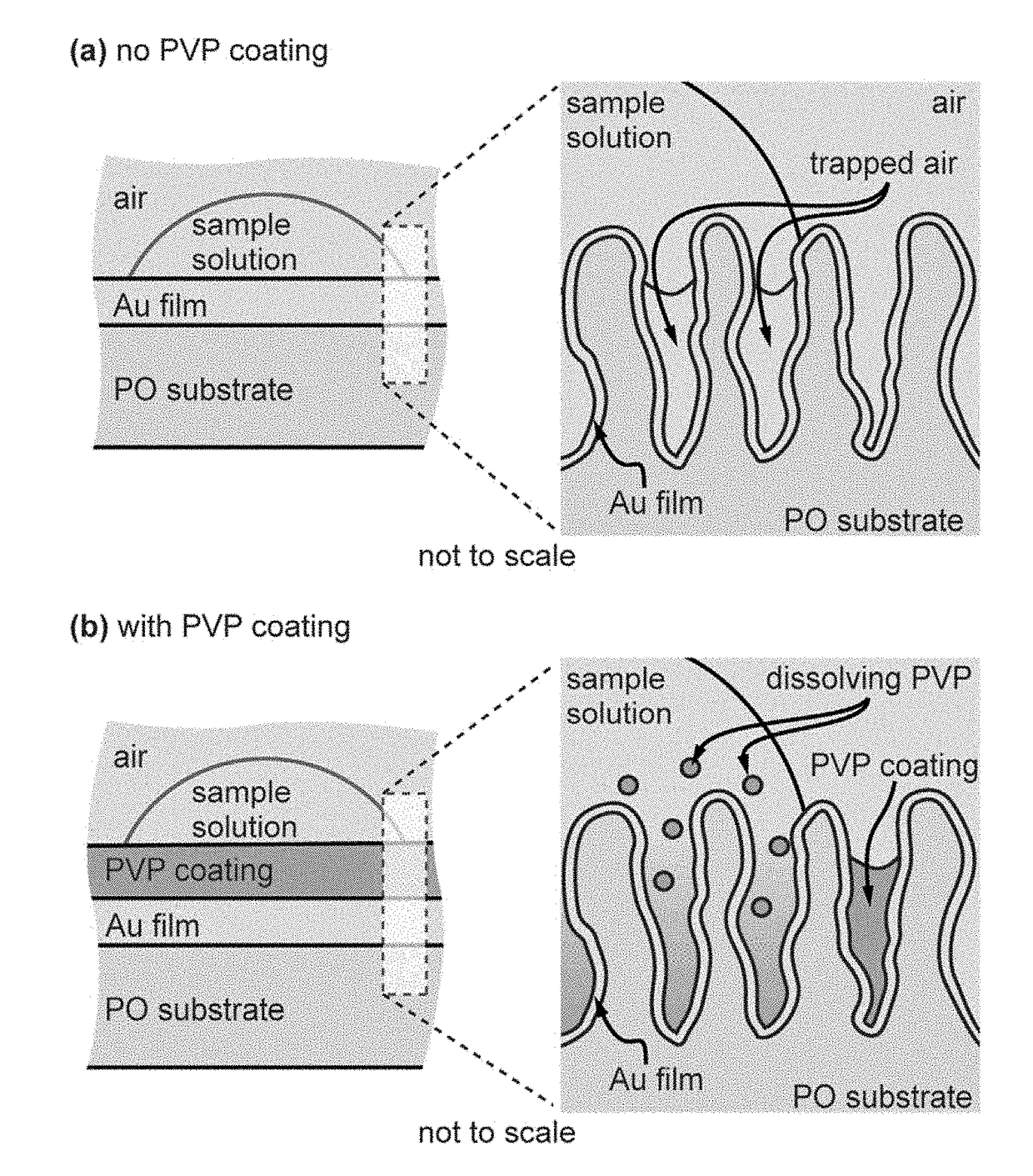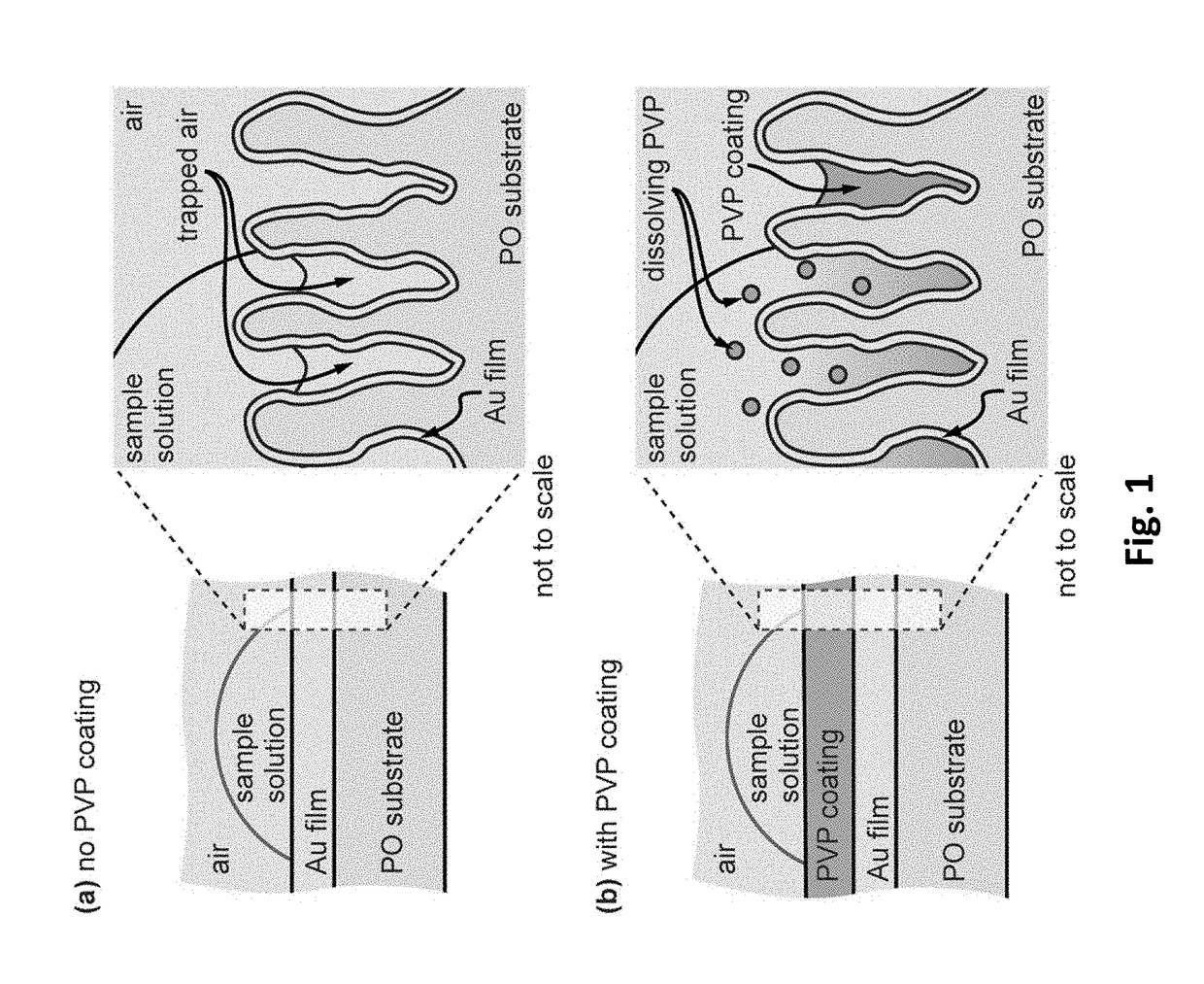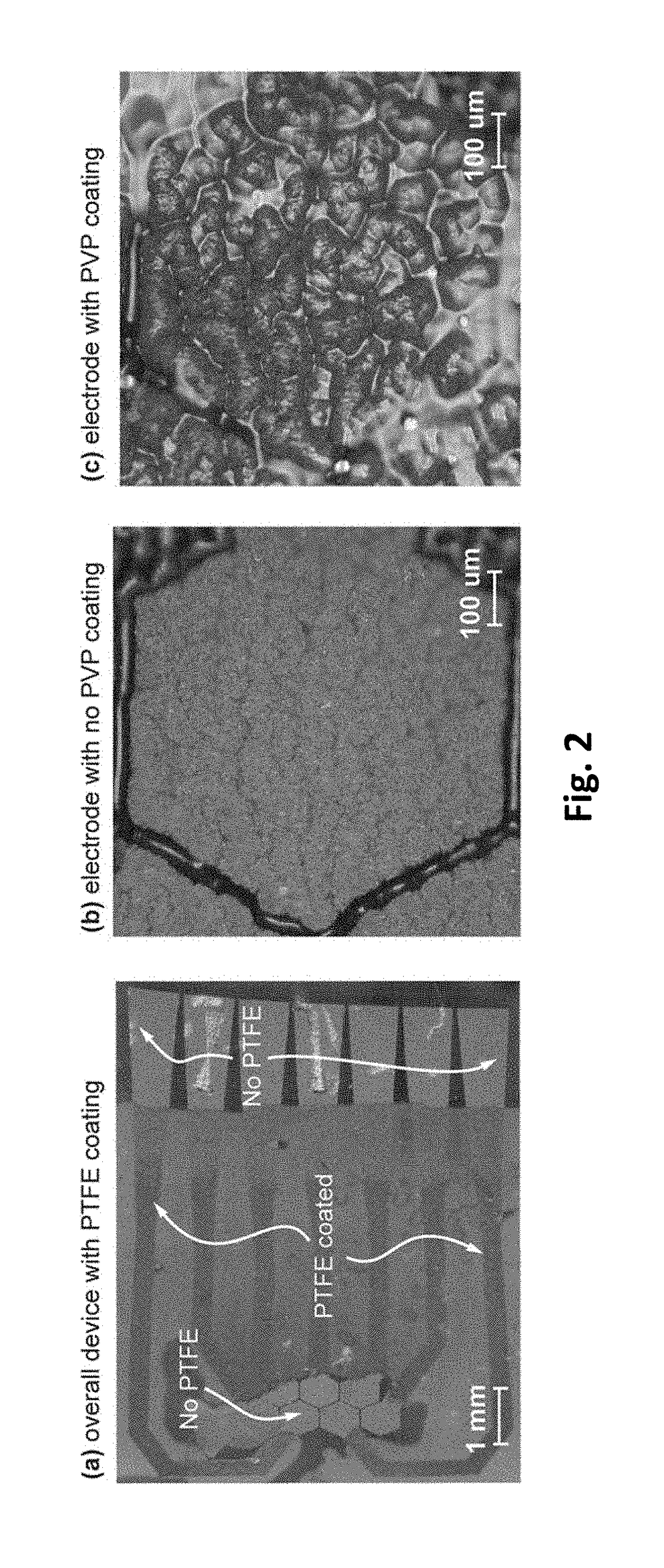Shrink electrode
a shrink electrode and electrode technology, applied in the field of shrink electrodes, can solve the problems of increased background noise, designers are confronted with signal-to-noise constraints, and the electronic sensor is not without potentially important limitations, so as to improve signal gain, enhance shrink electrode easa, and improve signal-to-noise ratio
- Summary
- Abstract
- Description
- Claims
- Application Information
AI Technical Summary
Benefits of technology
Problems solved by technology
Method used
Image
Examples
example 1
Superwetting and Aptamer Functionalized Shrink-Induced High Surface Area Electrochemical Sensors
[0060]Electrochemical sensing is moving to the forefront of point-of-care and wearable molecular sensing technologies due to the ability to miniaturize the required equipment, a critical advantage over optical methods in this field. Electrochemical sensors that employ roughness to increase their microscopic surface area offer a strategy to combatting the loss in signal associated with the loss of macroscopic surface area upon miniaturization. A simple, low-cost method of creating such roughness has emerged with the development of shrink-induced high surface area electrodes. Building on this approach, we demonstrate here a greater than 12-fold enhancement in electrochemically active surface area over conventional electrodes of equivalent on-chip footprint areas (Hauke et al. 2017 Biosensors and Bioelectronics 94: 438-442). This two-fold improvement on previous performance is obtained via t...
PUM
 Login to View More
Login to View More Abstract
Description
Claims
Application Information
 Login to View More
Login to View More - R&D
- Intellectual Property
- Life Sciences
- Materials
- Tech Scout
- Unparalleled Data Quality
- Higher Quality Content
- 60% Fewer Hallucinations
Browse by: Latest US Patents, China's latest patents, Technical Efficacy Thesaurus, Application Domain, Technology Topic, Popular Technical Reports.
© 2025 PatSnap. All rights reserved.Legal|Privacy policy|Modern Slavery Act Transparency Statement|Sitemap|About US| Contact US: help@patsnap.com



